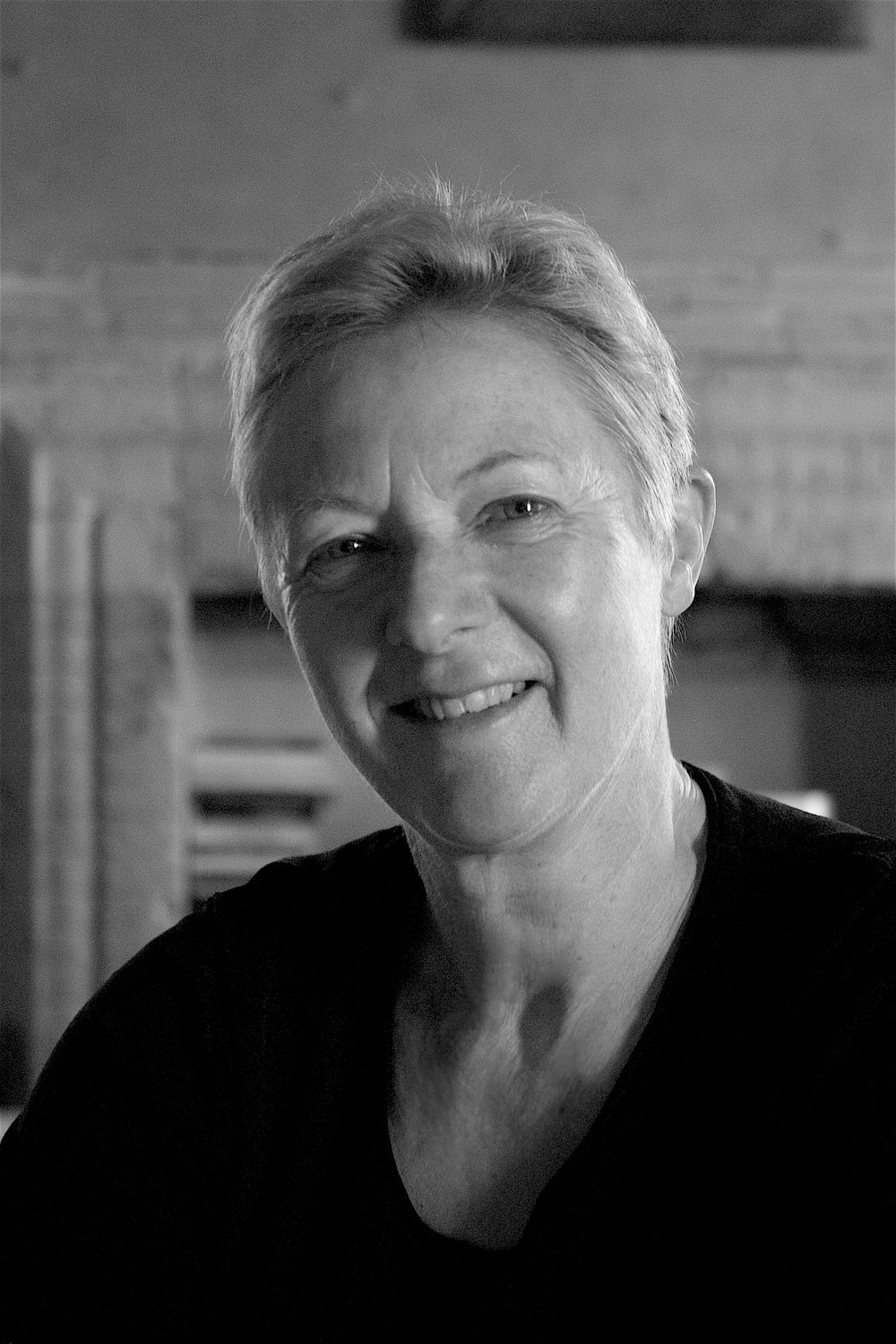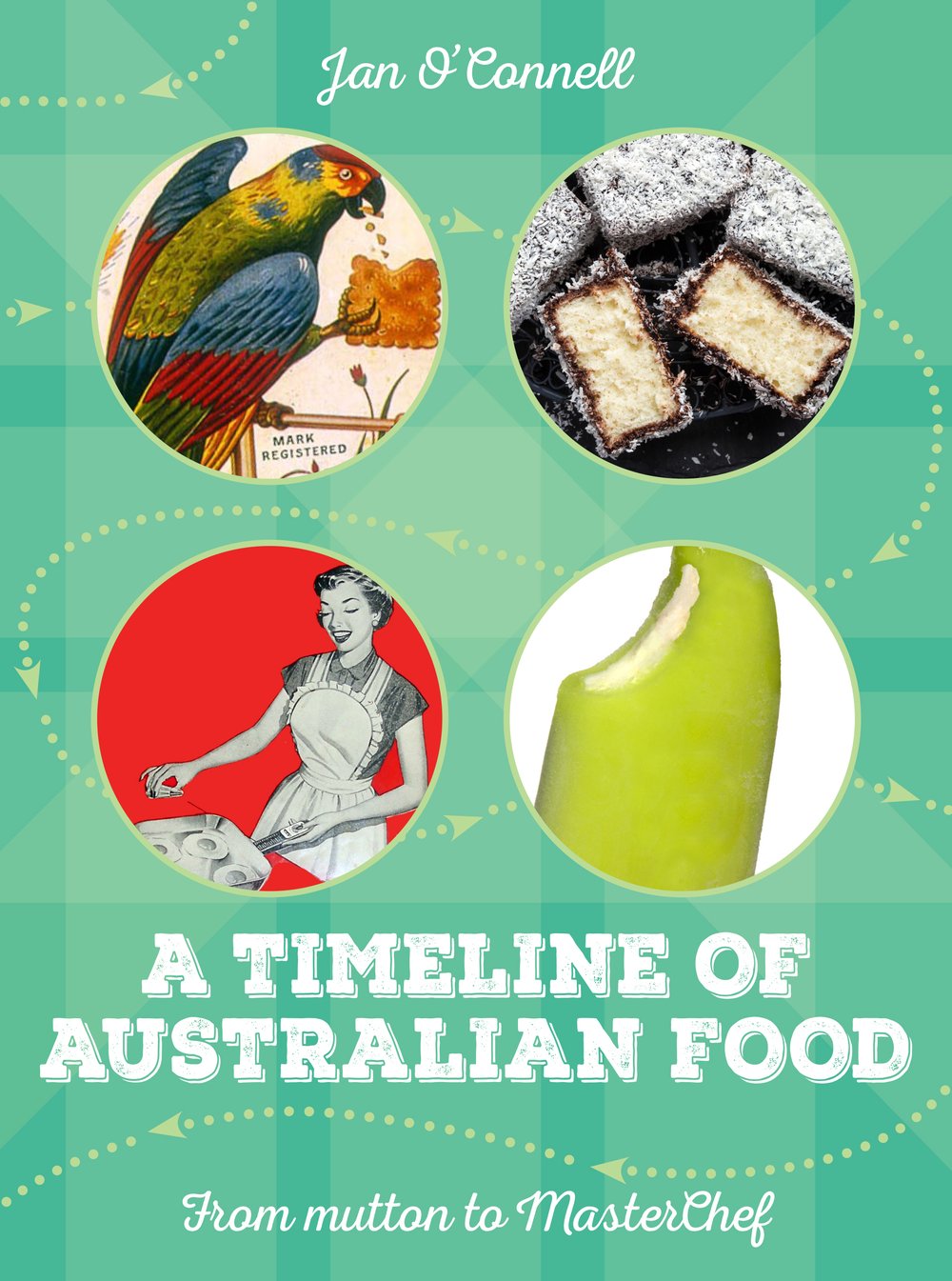Edited Introduction to A Timeline of Australian Food by Jan O’Connell
We all need to eat. And in today’s Australia most of us are fortunate enough to eat not just what we need, but what we choose. Those choices are almost limitless. At the supermarket, foods from around the world line aisle after aisle. Any self-respecting suburban shopping strip will include, at the very least, a pizzeria, a Thai restaurant and a café serving single-origin coffee. Flip through a dining-out guide and you’ll find more than 40 different cuisines – from Argentine to Croatian to Vietnamese.
It wasn’t always like this. Yes, there are Australians alive today who can remember life before pizza. Go back less than a century and many were struggling to feed their families during the privations of the Great Depression. A century before that, Australian agriculture was still finding its feet, but the first vineyards were beginning to produce saleable wine. Step back further still and Aboriginal people, without the benefit of ‘Product of Australia’ labelling, were enjoying a varied diet of 100 per cent local produce. In his book Dark Emu, Indigenous author Bruce Pascoe challenges the view that those Aboriginal people were simply nomadic hunter-gatherers. Although they never developed a system of settled agriculture, they exerted considerable control over their environment. They used methods including fire, grain harvesting and storage, fish and eel traps and even some planting to ensure the continuity of their food supply. Around 30 000 years ago, in northern New South Wales, people were grinding grain, probably millet, to make the world’s first bread. At least 8000 years ago, in south-eastern Victoria, the local people were practising aquaculture, growing eels that were smoked and traded.
Aboriginal people, unrestrained by permanent homes and fenced fields, followed their food from season to season. To the first Europeans, this way of living was completely alien. They came ashore in this faraway prison with their stocks of white flour, salted meat, dried peas, butter and rice. Domestic animals, too, had made the long sea crossing.
Early attempts at farming did not go well and supply ships were slow in coming. Convicts and soldiers alike were on reduced rations, relying on fish, oysters and native animals and fruits to supplement their diet. They also traded with the local Aboriginal people for game, especially kangaroo. Their acceptance of native produce was grudging, however. And temporary.
John Newton, in his book The Oldest Foods on Earth, has shown how the colonists soon turned their backs on what Australia provided in favour of more familiar fare. Soon new farming lands were opened up at Parramatta. Now there were fences, fields of wheat, vegetable gardens and emerging orchards. By the mid-1790s, the rich land along the Hawkesbury River became known as the ‘granary of the colony’. Despite the occasional flood, dry spell or caterpillar plague, European-style farming flourished.
Meanwhile, a new outpost had faced its own hungry years. Within three years of the first settlement in Van Diemen’s Land (Tasmania) in 1803, food supplies were so low the Governor needed to requisition stores from passing ships. Ten years later, local farms were producing wheat, fruit and livestock, sustaining the colonists as well as the boisterous sealers and whalers who made Hobart their base.
On the mainland, the search for farmland continued. In mid-1813 seven men, four horses and five dogs looked down from Mount York on the lands to the west of the Blue Mountains. The expedition led by William Wentworth, Gregory Blaxland and William Lawson marked the beginning of a westward expansion by the colonists.
During the following decades the explorers pushed into the interior, followed by the squatters with their sheep and, later, the overlanders with their cattle. Sailing ships carried colonists to new settlements at Moreton Bay in Queensland, Swan River in Western Australia, Adelaide in South Australia and Port Phillip in Victoria. By the end of the 1840s, the Port Phillip District (now Victoria) had 70 000 people and six million sheep.
It’s no wonder that mutton became daily fare for much of the population. Meat, tea and bread (often damper cooked in the fire) were the monotonous staples of everyday life. Travellers lodging at an inn could expect a dish of mutton chops or, possibly, mutton stew. When, in the 1850s, the gold rushes brought hundreds of thousands of new immigrants from all over the globe, hordes of sheep were driven to the goldfields and mutton sustained the diggers in their toils.
The gold rushes changed Australia. The population grew rapidly and became more diverse. The new arrivals were free men and women keen to build a more prosperous future. And Australia did prosper. There were railways and telegraph lines, schools, churches, libraries and universities.
While the idea of ‘meat three times a day’ still enticed prospective immigrants to the ‘working man’s paradise’, there were many with more eclectic tastes. They supplemented their traditional, mostly English, fare with local pigeons, duck and bush turkey washed down with excellent beer or some very respectable Australian wines. And they weren’t above sampling a kangaroo tail, a parrot pie or a baked echidna now and then.
The old cookery books from ‘home’, including the popular Mrs Beeton’s, now left something to be desired. Then a Hobart gentleman called Edward Abbott decided to create one that looked beyond the omnipresent mutton. In the early 1860s, he set out to write the first truly Australian cookery book.
That is where we begin our story.
Jan O’Connell’s book A Timeline of Australian Food is published by NewSouth in December 2017.

